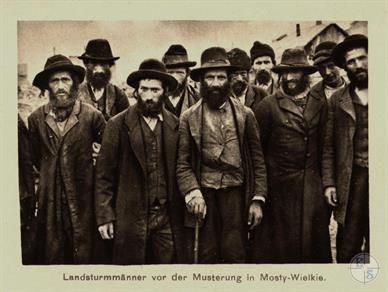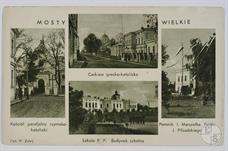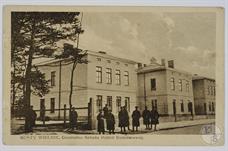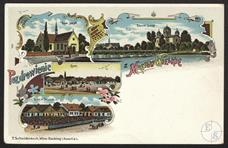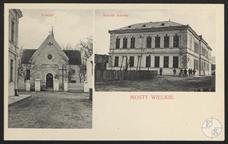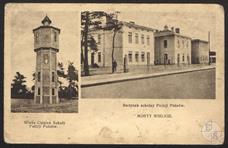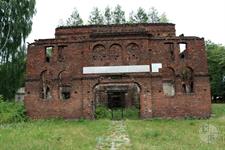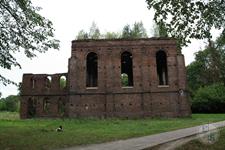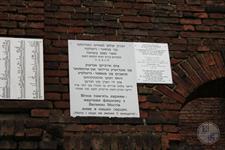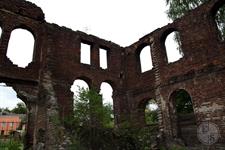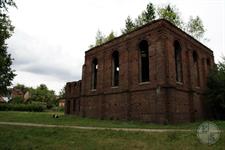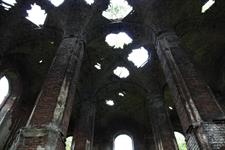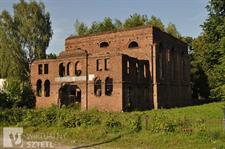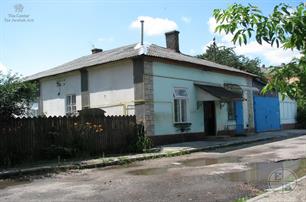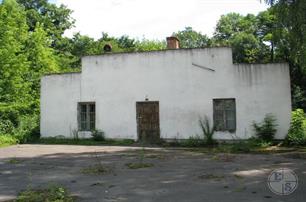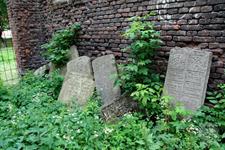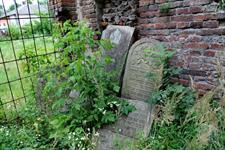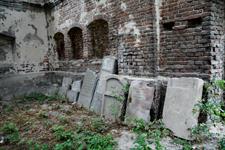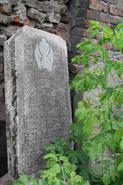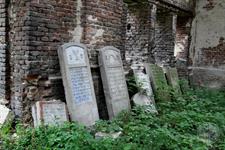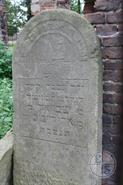Velyki Mosty
Sources:
- Pinkas Hakehillot Polin: Encyclopedia of Jewish Communities, Poland, Volume II, published by Yad Vashem, Jerusalem. Translated by JewishGen, Inc.
- Virtual Shtetl. Mosty Wielkie
- Russian Jewish encyclopedia
Photo:
- Eugene Shnaider
- Vladimir Levin, Center for Jewish art. Velyki Mosty (Mosty Wielkie, Velikie Mosty)
- Biblioteka Narodowa Polona
- Virtual Shtetl. Miejsce egzekucji i grуb masowy w lesie koło Mostуw Wielkich
- Pinkas Hakehillot Polin: Encyclopedia of Jewish Communities, Poland, Volume II, published by Yad Vashem, Jerusalem. Translated by JewishGen, Inc.
- Virtual Shtetl. Mosty Wielkie
- Russian Jewish encyclopedia
Photo:
- Eugene Shnaider
- Vladimir Levin, Center for Jewish art. Velyki Mosty (Mosty Wielkie, Velikie Mosty)
- Biblioteka Narodowa Polona
- Virtual Shtetl. Miejsce egzekucji i grуb masowy w lesie koło Mostуw Wielkich
Chervonohrad district, Lviv region
Between September 1939 and June 1941, Mosty Wielkie was occupied by the Soviet forces. On 29 June 1941, it was seized by the Wehrmacht. Aided by Ukrainians, the Germans soon launched a campaign of persecution and murder of the local Jews. It lasted about a month. Anti-Jewish operations were coordinated by the Gestapo from Lviv with the help of German gendarmerie and Ukrainian police.
On 1 August 1941, control of the town was taken over by German civil administration. Mosty Wielkie became part of Kreis Lemberg-Land. A German military police station and a Ukrainian police unit were established in the town.
On 6 June 1941, the local population perpetrated a pogrom. During the riots, 19 Jews were burnt alive in the synagogue. A little over a month later, on 22 July 1941, the Germans carried out the first public execution in Mosty Wielkie, killing about 100 people – mostly Jews – accused of being Soviet political activists.
In the summer of 1941, the German military administration ordered to establish a Jewish Council (Judenrat) in Mosty. Set up with it was an auxiliary unit of Jewish police. Jews were ordered to wear white armbands with the Star of David. Most of their property was confiscated, especially valuables such as silver and gold. They were also exploited as slave labour.
Between the summer of 1941 and the summer of 1942, an open ghetto operated in Mosty Wielkie. Its population included Jews resettled from nearby towns. Before the ghetto had been fully set up, that is until early August 1942, Jews could settle within the area of the local forced labour camp. Once the Jewish district started to operate, they had to give bribes to be let out of the ghetto in order to barter valuables for food with the local peasants.
The people moving into the ghetto from other parts of the town were not allowed to take their belongings with them. The district consisted of about 30 small houses surrounded with a two-metre-high barbed wire fence. Men and women were separated – the ghetto itself was divided into two sections with an additional barbed wire fence.
The prisoners were sent to forced labour in many different facilities: laundry, factory, sawmill, railway construction, and in the camp administration. The operation of the camp was overseen by the SS. The ghetto was later fenced.
In the autumn of 1942, the German authorities ordered the resettlement of a large part of the Jewish population of Mosty Wielkie to Sokal and Żуłkiew (Zhovkva). Between 22 and 24 October, the Jews were transported to Sokal, where a closed ghetto had been set up a few days earlier. An extermination action was carried out soon after their arrival, on 28 October, with over 2,000 people transported to the extermination camp in Bełżec and about 60 killed on the spot.
On 27 May 1943, the Sokal ghetto was liquidated. The Germans shot about 3,000 Jews on a single day. The ghetto in Żуłkiew was set up slightly later, in early December 1942. It was liquidated between 15 and 25 March 1943, with ca. 800 Jews transported to the Janowska camp in Lviv and ca. 1,500 executed in the Borek Forest.
Even after the resettlement, a group of Jews still remained in the forced labour camp in Mosty Wielkie. In January 1943, the central authorities decided to cut down on the funds allotted to Jewish forced labour. As a result, half of the Jewish people still residing in Mosty, including women, the elderly, and the sick, were murdered.
On 10 February 1943, a group of some 20 to 30 Jews were taken to the forest and ordered to dig up mass graves. In the afternoon, SiPo officers from Lviv, assisted by Ukrainian policemen, shot at least 1,150 Jews at the site. The mass execution is considered by historians as the date of the liquidation of the ghetto in Mosty Wielkie.
The forced labour camp was liquidated a few months later, on 1 May 1943. Its prisoners – about 300–400 people – were deported to Rawa Ruska, where they were all murdered in June (probably between 8 and 10 June) 1943.
Only a few dozen people from the pre-war Jewish community of Mosty Wielkie survived World War II.
On 1 August 1941, control of the town was taken over by German civil administration. Mosty Wielkie became part of Kreis Lemberg-Land. A German military police station and a Ukrainian police unit were established in the town.
On 6 June 1941, the local population perpetrated a pogrom. During the riots, 19 Jews were burnt alive in the synagogue. A little over a month later, on 22 July 1941, the Germans carried out the first public execution in Mosty Wielkie, killing about 100 people – mostly Jews – accused of being Soviet political activists.
In the summer of 1941, the German military administration ordered to establish a Jewish Council (Judenrat) in Mosty. Set up with it was an auxiliary unit of Jewish police. Jews were ordered to wear white armbands with the Star of David. Most of their property was confiscated, especially valuables such as silver and gold. They were also exploited as slave labour.
Between the summer of 1941 and the summer of 1942, an open ghetto operated in Mosty Wielkie. Its population included Jews resettled from nearby towns. Before the ghetto had been fully set up, that is until early August 1942, Jews could settle within the area of the local forced labour camp. Once the Jewish district started to operate, they had to give bribes to be let out of the ghetto in order to barter valuables for food with the local peasants.
The people moving into the ghetto from other parts of the town were not allowed to take their belongings with them. The district consisted of about 30 small houses surrounded with a two-metre-high barbed wire fence. Men and women were separated – the ghetto itself was divided into two sections with an additional barbed wire fence.
The prisoners were sent to forced labour in many different facilities: laundry, factory, sawmill, railway construction, and in the camp administration. The operation of the camp was overseen by the SS. The ghetto was later fenced.
In the autumn of 1942, the German authorities ordered the resettlement of a large part of the Jewish population of Mosty Wielkie to Sokal and Żуłkiew (Zhovkva). Between 22 and 24 October, the Jews were transported to Sokal, where a closed ghetto had been set up a few days earlier. An extermination action was carried out soon after their arrival, on 28 October, with over 2,000 people transported to the extermination camp in Bełżec and about 60 killed on the spot.
On 27 May 1943, the Sokal ghetto was liquidated. The Germans shot about 3,000 Jews on a single day. The ghetto in Żуłkiew was set up slightly later, in early December 1942. It was liquidated between 15 and 25 March 1943, with ca. 800 Jews transported to the Janowska camp in Lviv and ca. 1,500 executed in the Borek Forest.
Even after the resettlement, a group of Jews still remained in the forced labour camp in Mosty Wielkie. In January 1943, the central authorities decided to cut down on the funds allotted to Jewish forced labour. As a result, half of the Jewish people still residing in Mosty, including women, the elderly, and the sick, were murdered.
On 10 February 1943, a group of some 20 to 30 Jews were taken to the forest and ordered to dig up mass graves. In the afternoon, SiPo officers from Lviv, assisted by Ukrainian policemen, shot at least 1,150 Jews at the site. The mass execution is considered by historians as the date of the liquidation of the ghetto in Mosty Wielkie.
The forced labour camp was liquidated a few months later, on 1 May 1943. Its prisoners – about 300–400 people – were deported to Rawa Ruska, where they were all murdered in June (probably between 8 and 10 June) 1943.
Only a few dozen people from the pre-war Jewish community of Mosty Wielkie survived World War II.
The earliest recorded mentions of Jews in Mosty Wielkie (ukr. Velyki Mosty, Великі Мости) date back to the 16th century. The locality was chartered on 23 July 1549, with the local Jews granted all privileges coming with the new municipal status: “If the Jews wish to stay in the town, they shall be given the rights and freedoms enjoyed by the Jews of Bełz.”
Soon afterwards, in 1578, the Jewish population was given the right to trade in beer and mead and engage in crafts both in the town and outside. Another privilege, issued in 1633, confirmed the existing rights and freedoms of the Jewish community, in particular those concerning the ownership of houses and land, as well as purchase and sale transactions. The same document also permitted the Jews to erect a synagogue.
Soon afterwards, in 1578, the Jewish population was given the right to trade in beer and mead and engage in crafts both in the town and outside. Another privilege, issued in 1633, confirmed the existing rights and freedoms of the Jewish community, in particular those concerning the ownership of houses and land, as well as purchase and sale transactions. The same document also permitted the Jews to erect a synagogue.
Documents produced following the lustration of 1626 described the financial obligations of the inhabitants of Mosty Wielkie, including the Jews, who were to pay 10 zlotys per house. The same sources also mention one Jewish householder and one Jewish bailiff working in the town.
In 1662, Mosty Wielkie was almost completely destroyed in a Tatar invasion. The Jewish community was revived in the 18th century. In 1880, the town was inhabited by 1,309 Jews, who constituted about 34% of all its residents (3,809). Shortly thereafter, in 1900, their number increased to 1,611, i.e. to about 36% of the entire population of the town (4,454). This marked the peak size of the local Jewish community.
The destruction caused by World War I, a great famine, and fires set by the Russians leaving Mosty Wielkie led to a drop in the number of Jewish inhabitants – in 1921, there were 1,142 Jews in the town, i.e. ca. 31% of all residents (3,795), while according to the census of 1931, Mosty had 1,266 Jewish residents. By mid-1941, this number had risen to ca. 1,400.
In 1662, Mosty Wielkie was almost completely destroyed in a Tatar invasion. The Jewish community was revived in the 18th century. In 1880, the town was inhabited by 1,309 Jews, who constituted about 34% of all its residents (3,809). Shortly thereafter, in 1900, their number increased to 1,611, i.e. to about 36% of the entire population of the town (4,454). This marked the peak size of the local Jewish community.
The destruction caused by World War I, a great famine, and fires set by the Russians leaving Mosty Wielkie led to a drop in the number of Jewish inhabitants – in 1921, there were 1,142 Jews in the town, i.e. ca. 31% of all residents (3,795), while according to the census of 1931, Mosty had 1,266 Jewish residents. By mid-1941, this number had risen to ca. 1,400.
Since the early 19th century, the Jewish community of Mosty Wielkie was heavily influenced by the Hasidic dynasty from nearby Bełz, which hampered any major development of the Haskalah or Zionism in the town. This state of affairs only changed in the interwar period, when the deteriorating economic situation started to sway more and more local Jews towards the ideology of Zionism.
The local Zionists remained under a strong influence of activists from Lviv – the largest centre of Zionism in Galicia and the second largest (after Warsaw) in Poland. Mosty Wielkie also had strong economic ties with Lviv, which was often visited not only by the local merchants, but also by young people. Having returned to their hometown, they would found local cells of political parties and youth organisations. Among these were the General Zionists, Ha'Or, Ahva, Gordonia, Betar, HaOved, Zeirei Agudath Israel.
Pioneering youth organisations established hakhshara centres to prepare for migration to Palestine. Mosty also boasted a Hebrew school and a Beit Yaakov school. Among the teachers employed in the latter were Jewish poet A.D. Werbner and Icchak Scheinfeld.
The local Zionists remained under a strong influence of activists from Lviv – the largest centre of Zionism in Galicia and the second largest (after Warsaw) in Poland. Mosty Wielkie also had strong economic ties with Lviv, which was often visited not only by the local merchants, but also by young people. Having returned to their hometown, they would found local cells of political parties and youth organisations. Among these were the General Zionists, Ha'Or, Ahva, Gordonia, Betar, HaOved, Zeirei Agudath Israel.
Pioneering youth organisations established hakhshara centres to prepare for migration to Palestine. Mosty also boasted a Hebrew school and a Beit Yaakov school. Among the teachers employed in the latter were Jewish poet A.D. Werbner and Icchak Scheinfeld.
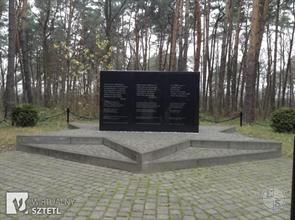 |
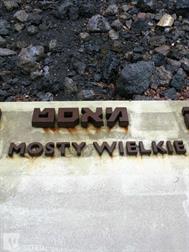 |
| Memorial on the mass grave in the forest near the town | Memorial inscription in the camp of the death Belzhets |
An interesting postcard from Gross Family Collection (The Center for Jewish Art). It depicts a group of Jews with a signature: "Landsturmanner before gathering in Mosty Wielkie".
In German-speaking countries, the term Landsturm was historically used to refer to militia or military units composed of troops of inferior quality. The Austro-Hungarian Landsturm was a reserve force that consisted of men aged 34 to 55. It was intended to provide replacements for the front line units and provide a militia for local defense. During the First World War, the Austrian Landsturm formed 40 regiments totaling 136 battalions.
In German-speaking countries, the term Landsturm was historically used to refer to militia or military units composed of troops of inferior quality. The Austro-Hungarian Landsturm was a reserve force that consisted of men aged 34 to 55. It was intended to provide replacements for the front line units and provide a militia for local defense. During the First World War, the Austrian Landsturm formed 40 regiments totaling 136 battalions.

- Home
- Shtetls
- Vinnytsia region
- Volyn region
- Dnipro region
- Donetsk region
- Zhytomyr region
- Zakarpattia region
- Zaporizhzhia region
- Ivano-Frankivsk region
- Kyiv region
- Kropyvnytskyi region
- Luhansk region
- Lviv region
- Mykolayiv region
- Odessa region
- Poltava region
- Rivne region
- Sumy region
- Ternopil region
- Kharkiv region
- Kherson region
- Khmelnytskyi region
- Chernihiv region
- Chernivtsi region
- Cherkasy region
- Crimea
- Synagogues
- Cemeteries
- Objects & guides
- Old photos
- History
- Contact
Jewish towns of Ukraine
Jewish towns of Ukraine
My shtetl
My shtetl
Donate
